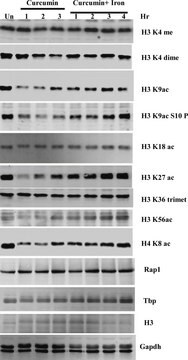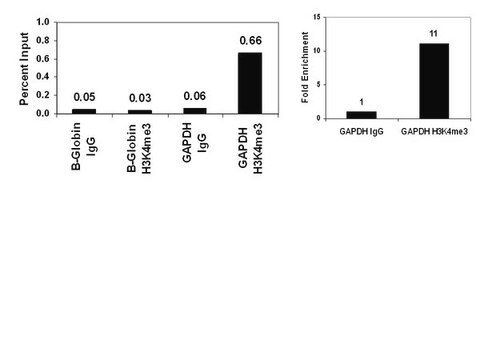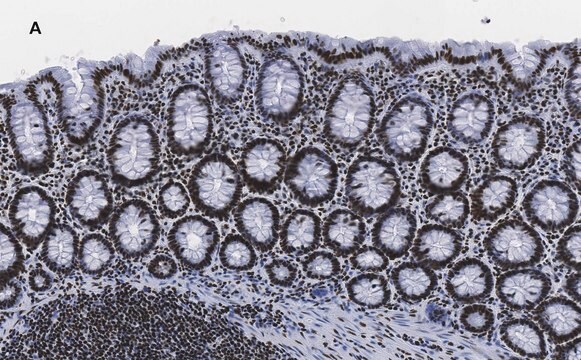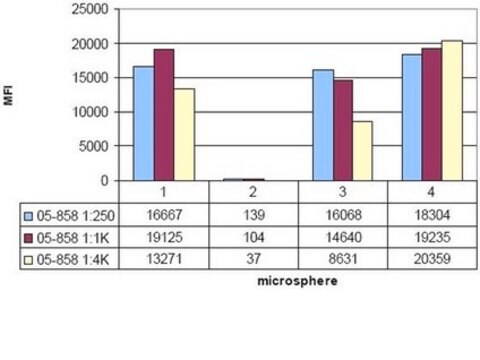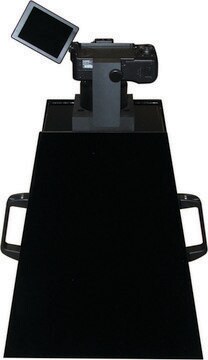05-1339
Anti-Trimethyl Histone H3 (Lys4) Antibody, clone CMA304
clone CMA304, from mouse
Synonim(y):
H3K4me3, Histone H3 (tri methyl K4), H3 histone family, member T, histone 3, H3, histone cluster 3, H3
About This Item
Polecane produkty
pochodzenie biologiczne
mouse
Poziom jakości
forma przeciwciała
purified antibody
rodzaj przeciwciała
primary antibodies
klon
CMA304, monoclonal
reaktywność gatunkowa
human, vertebrates
metody
ELISA: suitable
dot blot: suitable
immunocytochemistry: suitable
immunoprecipitation (IP): suitable
multiplexing: suitable
western blot: suitable
izotyp
IgG1κ
numer dostępu NCBI
numer dostępu UniProt
Warunki transportu
wet ice
docelowa modyfikacja potranslacyjna
trimethylation (Lys4)
informacje o genach
human ... H3C1(8350)
Opis ogólny
Specyficzność
Immunogen
Zastosowanie
This antibody has been shown by an outside laboratory to be suitable for ELISA.1
Immunocytochemistry:
This antibody has been shown by an outside laboratory to be suitable for immunocytochemistry.1
Immunoprecipitation:
This antibody has been shown by an outside laboratory to be suitable for immunoprecipitation.1
Multiplexing:
This antibody specifically recognizes histone H3 trimethylated on Lys4 by Luminex® assay.
Epigenetics & Nuclear Function
Histones
Jakość
0.5 - 2 μg/mL (1:500-2000) dilution of this antibody detected trimethyl Histone H3 (Lys4) on 10 μg of HeLa acid extract.
Opis wartości docelowych
Powiązanie
Postać fizyczna
Przechowywanie i stabilność
Komentarz do analizy
HeLa Acid extract lysate
Inne uwagi
Informacje prawne
Oświadczenie o zrzeczeniu się odpowiedzialności
Nie możesz znaleźć właściwego produktu?
Wypróbuj nasz Narzędzie selektora produktów.
Kod klasy składowania
10 - Combustible liquids
Klasa zagrożenia wodnego (WGK)
WGK 2
Temperatura zapłonu (°F)
Not applicable
Temperatura zapłonu (°C)
Not applicable
Certyfikaty analizy (CoA)
Poszukaj Certyfikaty analizy (CoA), wpisując numer partii/serii produktów. Numery serii i partii można znaleźć na etykiecie produktu po słowach „seria” lub „partia”.
Masz już ten produkt?
Dokumenty związane z niedawno zakupionymi produktami zostały zamieszczone w Bibliotece dokumentów.
Nasz zespół naukowców ma doświadczenie we wszystkich obszarach badań, w tym w naukach przyrodniczych, materiałoznawstwie, syntezie chemicznej, chromatografii, analityce i wielu innych dziedzinach.
Skontaktuj się z zespołem ds. pomocy technicznej